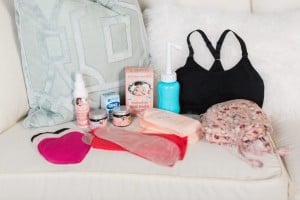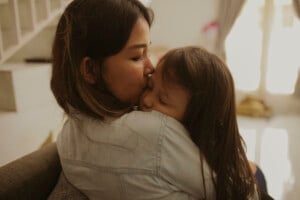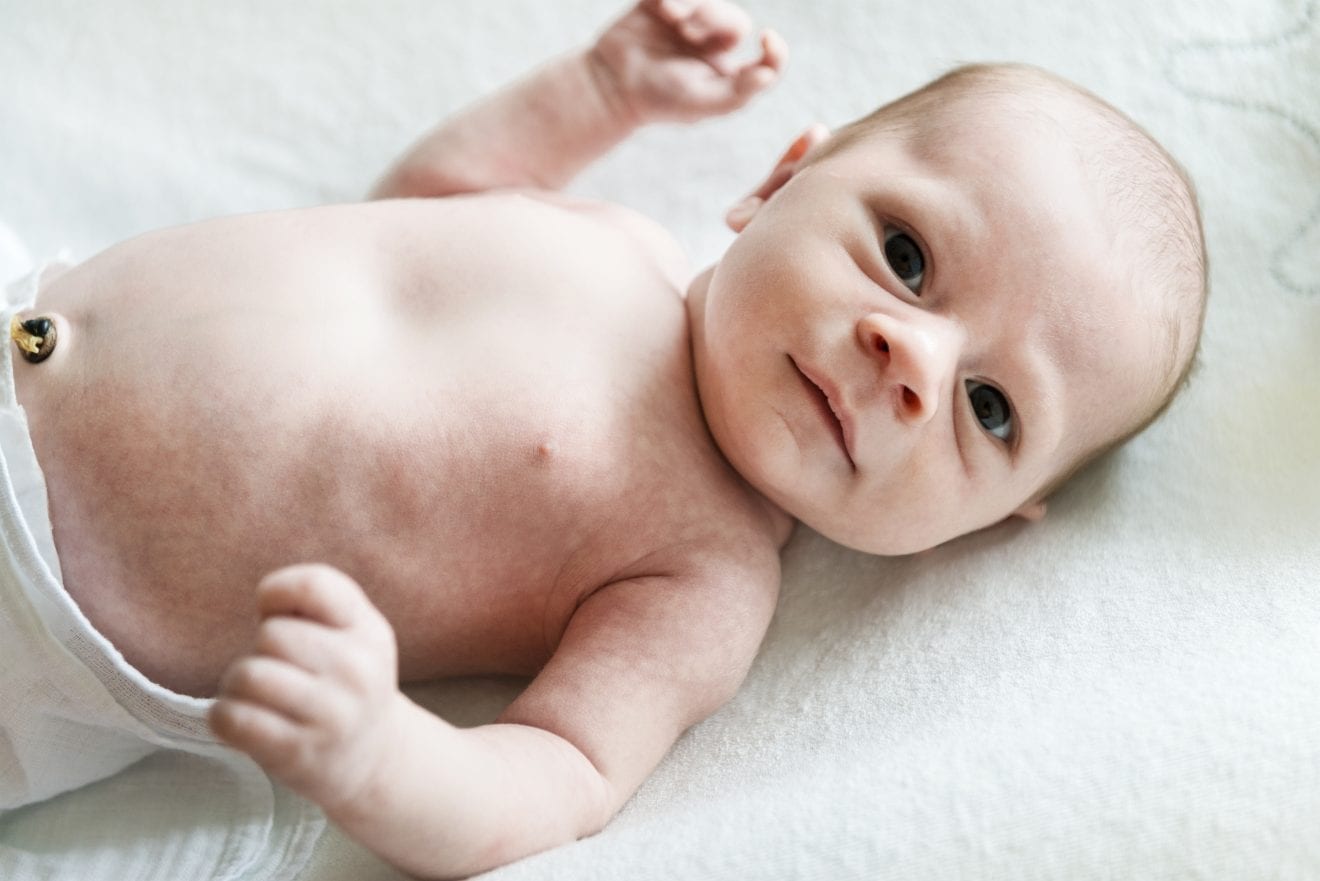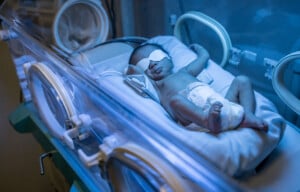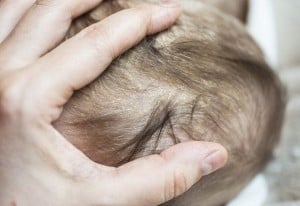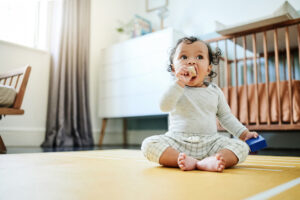As you prepare for the arrival of your baby, you may have started thinking about who will get the honor of cutting your baby’s umbilical cord after delivery. But have you given much thought to what happens afterward? Read more to learn about umbilical cord care, including how to keep it clean, signs of an infected umbilical cord, and things to look out for after it detaches.
Why Your Baby Has an Umbilical Cord Stump
During pregnancy, your baby’s umbilical cord is vital to their development. Your baby’s umbilical cord supplies the necessary blood, oxygen, and nutrients for growth through its two arteries and one vein. It also carries away waste products.1 At birth, the umbilical cord’s function is taken over by your baby’s ability to breathe on its own and receive nutrients by feeding. The cord is clamped to stop its blood flow within approximately 1 inch of your baby’s belly.7 The remainder of the cord is cut, leaving the umbilical cord stump. Since there aren’t any nerves in the umbilical cord, this is a painless process.1
Why Is Umbilical Cord Care Important?
Umbilical cord care can prevent complications such as infection or inadvertent detachment causing bleeding. After birth, the umbilical cord stump is moist, and if it isn’t cared for properly and allowed to dry naturally, it can become an ideal place for bacteria to grow and enter your baby’s body.7 An umbilical cord stump infection known as omphalitis can spread and become a severe medical emergency.6
How To Clean Your Baby’s Umbilical Cord
Experts no longer recommend cleaning your baby’s umbilical cord with rubbing alcohol. Research studies have shown this can irritate the surrounding skin and inhibit the natural separation of the umbilical cord stump.2 This is thought to occur because the alcohol may remove helpful bacteria that assist in the separation process.1
You should inspect the skin around your baby’s cord stump daily. You may need to gently push down on your baby’s belly and bend the cord to visualize the entire area. If you notice any secretions, you may use a wet cotton swab to carefully wipe them away and allow the skin to air dry. Only use alcohol to clean the area if instructed to do so by your baby’s provider.6 While routine cleaning is not necessary, simply washing the drying cord stump gently with plain water and a washcloth and allowing it to air dry is the best technique to use if the cord becomes soiled with your baby’s pee or poop.1 Umbilical cord stumps need to dry adequately before they can naturally detach.6 You’ll want to give your baby sponge baths until their cord has fallen off.1
When changing their diaper, roll the front down before fastening it to ensure the cord stump isn’t inside it. This will help the base of the cord stay dry.2
When Does the Umbilical Cord Fall Off?
Detachment of the cord stump is a natural part of your baby’s development. Here are the newborn belly button stages of healing:
- Initially, your baby’s cord stump will be clamped and appear thick and moist with a whitish-yellow or blue hue.6
- Within a day or two, the cord is dry enough for the cord clamp to be removed by a healthcare provider. This is typically done before discharge if you deliver in a hospital.7
- Within days of birth, the cord stump will shrink and change to brown or gray.
- As time passes, the color will darken, and the cord stump will continue to shrink as it dries.6
- Complete separation typically takes one to three weeks.1
It may be tempting to remove a dangling cord as it detaches, but it is essential to leave it alone and wait for it to fall off on its own. This will help avoid newborn umbilical cord bleeding that may result if it is removed too soon.2 If your baby’s cord has not fallen off on its own after three weeks, notify their healthcare provider.4
What To Do When the Cord Falls Off
When the time has come, you may be surprised one day to find that your baby’s umbilical cord stump has fallen off inside their swaddle blanket. Look closely at their belly button to ensure it is healing properly. If the umbilical cord falls off and appears gooey or yellow underneath, this is a normal and temporary part of healing. A tiny amount of umbilical cord bleeding is also normal; however, if the bleeding is active, meaning each time a drop of blood is wiped away, another appears, or you see a spot of blood on their onesie larger than 2 inches across, this is abnormal. You should contact your baby’s provider right away.4,6
Some babies will develop an umbilical granuloma. This small red mass of scar-like tissue remains after the umbilical cord stump has detached.3 The granulomatous tissue produces a light yellow or clear mucous drainage with no other symptoms of infection. This typically resolves on its own within a week. However, notify your baby’s healthcare provider if the granuloma persists beyond a week.1 Untreated umbilical granulomas can grow larger and become a potential site for infection.6 The treatment for an umbilical granuloma is usually an application of silver nitrate, which cauterizes or burns the tissue. This area does not have nerves, so this process will be painless for your baby.2
Signs of an Infected Cord
Umbilical cord infections (“omphalitis”) are rare, but it is essential to differentiate between a normal vs. an infected umbilical cord. Signs of infection include a cord with a foul smell, redness, swelling, or tenderness of the skin surrounding your baby’s belly button.1 There may also be yellow drainage or bleeding. Also, your baby may develop a fever of 100.4 degrees Fahrenheit or higher, not feel well enough to feed, have poor muscle tone, or feel floppy. Contact their healthcare provider immediately if your baby has any of these symptoms.4
Umbilical cord care requires keeping the cord stump out of the diaper and dry. It is vital to evaluate the cord and surrounding skin daily for signs of infection and only give sponge baths until the cord fully detaches. If you have any concerns about bleeding or drainage after this happens, be sure to talk with your baby’s healthcare provider.
Newborns come into this world with unique vulnerabilities that require special care and attention. Now that you are aware of how to take care of your baby’s umbilical cord stump, enjoy this time you have with your little one because this stage doesn’t last forever.







